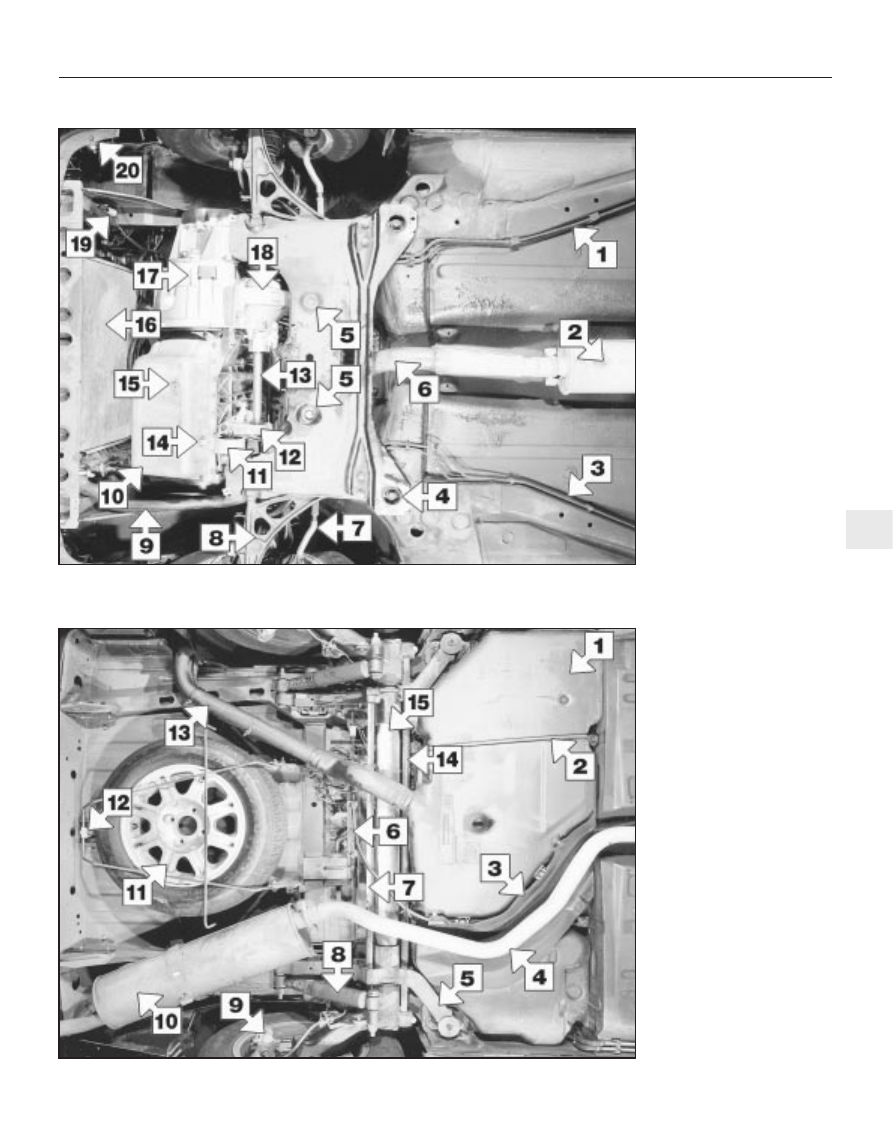содержание .. 5 6 7 8 ..
Peugeot 405. Manual - part 7

Maintenance & Servicing
1•7
1
Rear underbody view of a 1905 cc engine model
1 Fuel tank
2 Fuel tank supporting strap
3 Heat shield
4 Exhaust pipe
5 Rear suspension side member
6 Handbrake cable equaliser
mechanism
7 Rear suspension torsion bar
8 Rear shock absorber
9 Rear disc brake caliper
10 Exhaust rear silencer
11 Spare wheel (cover removed)
12 Spare wheel cradle support
hook
13 Fuel filler hose
14 Rear anti-roll bar
15 Suspension cross-link
Front underbody view of a 1905 cc engine model
1 Fuel lines
2 Front exhaust silencer
3 Brake lines
4 Front subframe rear mounting
5 Steering rack mountings
6 Exhaust downpipe
7 Steering tack rod
8 Lower suspension arm
9 Radiator lower hose
10 Engine oil sump
11 Rear engine mounting
12 Driveshaft intermediate
bearing housing
13 Right-hand driveshaft
14 Oil temperature sensor
15 Engine oil drain plug
16 Radiator
17 Transmission housing
18 Differential housing
19 Cooling fan resistor
20 Horn